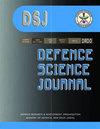高性能战斗机自由机动防护设计与验证
IF 0.8
4区 工程技术
Q3 MULTIDISCIPLINARY SCIENCES
引用次数: 0
摘要
高性能飞机的飞行包线保护对设计人员提出了挑战,并且涉及一个耗时的过程来验证所提供的保护。提出了一种在俯仰轴和滚转轴上采用控制路径限制器保护飞机偏离的设计方法。在这种方法中,最大和最小速率是根据开环飞机的能力作为动压力的函数来安排的。然后通过一种新的攻角保护来增强这一点,只有当飞行员的输入导致飞机超过正或负侧的入射(单侧保护)时,才能发挥作用,同时在攻角的正常操作范围内保持速率指挥姿态保持行为。传统的有代表性的飞行员模拟方法建立起来很耗时,而且可能不能充分确定离港保护方案是否有效。为了解决这个问题,开发了一种独特的使用遗传算法的多模态搜索,以验证该命令路径保护能够实现战斗机在整个飞行包线内的自由机动。快速先导控制输入序列被编码到染色体中。然后,多模态遗传算法在起始染色体群上使用交叉和突变等操作符来进化新的输入序列,然后运行这些序列以获得飞机响应。遗传算法的代价函数是由飞机的时间响应构造而成的,它被设计成有利于搜索使飞机起飞的多个极大值。利用开放域钦佩模型对该方法进行了验证。结果表明,本文提出的命令路径设计可用于防偏离,而多模态遗传算法有助于验证防偏离保护。本文章由计算机程序翻译,如有差异,请以英文原文为准。
Design and Verification of Carefree Maneuvering Protection for a High Performance Fighter Aircraft
Flight envelope protection for a high-performance aircraft poses a challenge to the designers and involves a time-consuming procedure to verify the provided protection. This paper presents a design approach to protect the aircraft from departure by a command path limiter for a rate command attitude hold controller in both the pitch and roll axes. In this approach, the maximum and minimum rates are scheduled as a function of the dynamic pressure on the basis of the open loop aircraft capabilities. This is then augmented with a novel angle of attack protection that comes into play only when the pilot inputs cause the aircraft to exceed the incidence on the positive or negative side (one sided protection), while maintaining the rate command attitude hold behavior within the normal operational bounds of angle of attack. Traditional methods of piloted simulation with a representative cohort of pilots can be time consuming to set up and may not give sufficient confidence whether a departure protection scheme is effective. To address this, a unique multi-modal search using genetic algorithm is developed to verify that this command path protection is able to achieve carefree maneuvering of a fighter aircraft in its entire flight envelope. The sequence of rapid pilot control inputs is coded into a chromosome. The multi-modal genetic algorithm then uses operators like cross-over and mutation on a starting population of chromosomes to evolve new inputs sequences which are then run to obtain the aircraft response. The cost function of the genetic algorithm which is constructed from the aircraft time response is designed to favor the search for multiple maxima which drive the aircraft to departure. The open domain ADMIRE model has been used to demonstrate the approach. Results indicate that the command path design proposed in this paper can be used to protect against departure and the novel multi-modal genetic algorithm helps to verify the departure protection.
求助全文
通过发布文献求助,成功后即可免费获取论文全文。
去求助
来源期刊

Defence Science Journal
综合性期刊-综合性期刊
CiteScore
1.80
自引率
11.10%
发文量
69
审稿时长
7.5 months
期刊介绍:
Defence Science Journal is a peer-reviewed, multidisciplinary research journal in the area of defence science and technology. Journal feature recent progresses made in the field of defence/military support system and new findings/breakthroughs, etc. Major subject fields covered include: aeronautics, armaments, combat vehicles and engineering, biomedical sciences, computer sciences, electronics, material sciences, missiles, naval systems, etc.
 求助内容:
求助内容: 应助结果提醒方式:
应助结果提醒方式:


